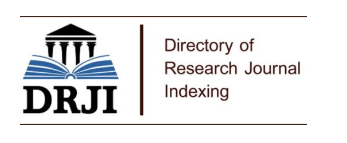Comparative Analysis of Raw and Roasted Peanut Skins: General Composition, Fatty Acids, and Minerals
DOI:
https://doi.org/10.57252/jrpfoods.2025.5Keywords:
Agro-industrial by-product, Valorisation, Peanut skin, Fatty acid composition, Mineral contentAbstract
Peanut (Arachis hypogaea L.) is widely cultivated in Türkiye, particularly in the Osmaniye region, and its processing generates a substantial amount of peanut skin as a by-product. Although commonly discarded, peanut skins contain valuable nutritional components. This study aimed to determine the general composition, fatty acid profile, and mineral content of peanut skins as well as to evaluate the effect of roasting on these parameters. The moisture, ash, fat, and protein contents of roasted and raw peanut skins were determined as 11.42%–9.86%, 3.62%–3.79%, 19.64%–15.91%, and 16.89%–14.94%, respectively. The results showed that raw peanut skin had higher moisture, fat and protein levels compared to the roasted samples. Oleic and linoleic acids were identified as the predominant fatty acids in peanut skins, accounting for over 70% of the total fatty acid composition, with slightly lower levels in the roasted samples. Mineral analysis revealed that potassium, calcium, magnesium, and phosphorus were the major elements in peanut skins. While the levels of potassium and magnesium increased after roasting, other minerals such as calcium, phosphorus, iron, manganese, copper, and zinc showed a decreasing trend. These findings highlight the underutilized nutritional potential of peanut skins and offer valuable insights into the compositional differences between raw and roasted forms.
References
Abdelrahim, G. M., Khatiwada, J., Rankins, D., Gurung, N., & Gueye, A. (2012). Influence of Feeding Peanut Skins on Performance of Gulf Coast Ewe Lambs. Journal of Animal Research and Technology, 1(2), 20–24. https://doi.org/10.5147/JART.V1I2.105
Alalwan, T. A., Mohammed, D., Hasan, M., Sergi, D., Ferraris, C., Gasparri, C., Rondanelli, M., & Perna, S. (2022). Almond, Hazelnut, and Pistachio Skin: An Opportunity for Nutraceuticals. Nutraceuticals, 2(4), 300–310. https://doi.org/10.3390/NUTRACEUTICALS2040023
Alasalvar, C., Pelvan, E., & Topal, B. (2010). Effects of roasting on oil and fatty acid composition of Turkish hazelnut varieties (Corylus avellana L.). International Journal of Food Sciences and Nutrition, 61(6), 630–642. https://doi.org/10.3109/09637481003691820;JOURNAL:JOURNAL:IIJF16;WGROUP:STRING:PUBLICATION
Aljuhaimi, F., & Özcan, M. M. (2018). Influence of oven and microwave roasting on bioproperties, phenolic compounds, fatty acid composition, and mineral contents of nongerminated peanut and germinated peanut kernel and oils. Journal of Food Processing and Preservation, 42(2), e13462. https://doi.org/10.1111/JFPP.13462
Al Juhaimi, F., Atasoy, Z. B., Uslu, N., Özcan, M. M., Mohamed Ahmed, I. A., & Walayat, N. (2025). The effect of roasting on oil content, fatty acids, bioactive compounds and mineral contents of purslane (Portulaca oleracea L.) Seeds. Foods, 14(5), 732.
Arya, S. S., Salve, A. R., & Chauhan, S. (2015). Peanuts as functional food: a review. Journal of Food Science and Technology, 53(1), 31. https://doi.org/10.1007/S13197-015-2007-9
Bodoira, R., Cecilia Cittadini, M., Velez, A., Rossi, Y., Montenegro, M., Martínez, M., & Maestri, D. (2022). An overview on extraction, composition, bioactivity and food applications of peanut phenolics. Food Chemistry, 381, 132250. https://doi.org/10.1016/j.foodchem.2022.132250
Bozdogan, A., Eker, T., Konuskan, D., Oz, A. T., & Kafkas, E. (2019). Effects of the storage of Turkish Gemlik olives under CO2 and N2 on the phenolic compounds and fatty acid compositions of olive oils. Journal of Food Measurement and Characterization, 13(1), 187–195. https://doi.org/10.1007/s11694-018-9932-z
Braddock, J. C., Sins, C. A., & O’keefe, S. F. (1995). Flavor and Oxidative Stability of Roasted High Oleic Acid Peanuts. Journal of Food Science, 60(3), 489–493. https://doi.org/10.1111/j.1365-2621.1995.tb09809.x
Caimari, A., Puiggròs, F., Suárez, M., Crescenti, A., Laos, S., Ruiz, J. A., Alonso, V., Moragas, J., Del Bas, J. M., & Arola, L. (2015). The intake of a hazelnut skin extract improves the plasma lipid profile and reduces the lithocholic/deoxycholic bile acid faecal ratio, a risk factor for colon cancer, in hamsters fed a high-fat diet. Food Chemistry, 167, 138–144. https://doi.org/10.1016/J.FOODCHEM.2014.06.072
Davis, J. P., & Dean, L. L. (2016). Peanut Composition, Flavor and Nutrition. Peanuts: Genetics, Processing, and Utilization, 289–345. https://doi.org/10.1016/B978-1-63067-038-2.00011-3
Eker, T., Darici, M., Selli, S., & Cabaroglu, T. (2022). Comparative evaluation of seed size and growing regions on the chemical compositions of raw and roasted NC-7 peanut cultivars. Journal of Food Processing and Preservation, 46, e15817. https://doi.org/10.1111/jfpp.15817
Hong-hai1, G., Li-ping1, Y., Xin-hua1, L., Ping1, Y., & Shu-bo2, W. (2010). Studies on Peanut Quality Regional Planning in China —&mdash|Guiding Thoughts, Aims and Principle. Journal of Agricultural Science and Technology, 12(2), 28. https://doi.org/10.3969/J.ISSN.1008-0864.2010.02.06
Kacar, B., & İnal, A. (2008). Bitki Analizleri (2nd ed.). Nobel, Ankara.
Kim, K. J., Hwang, E. S., Kim, M. J., Park, J. H., & Kim, D. O. (2020). Antihypertensive Effects of Polyphenolic Extract from Korean Red Pine (Pinus densiflora Sieb. et Zucc.) Bark in Spontaneously Hypertensive Rats. Antioxidants, 9(4), 333. https://doi.org/10.3390/ANTIOX9040333
Larrauri, M., Zunino, M. P., Zygadlo, J. A., Grosso, N. R., & Nepote, V. (2016). Chemical characterization and antioxidant properties of fractions separated from extract of peanut skin derived from different industrial processes. Industrial Crops and Products, 94, 964–971. https://doi.org/10.1016/J.INDCROP.2016.09.066
Lin, J. T., Liu, S. C., Hu, C. C., Shyu, Y. S., Hsu, C. Y., & Yang, D. J. (2016). Effects of roasting temperature and duration on fatty acid composition, phenolic composition, Maillard reaction degree and antioxidant attribute of almond (Prunus dulcis) kernel. Food Chemistry, 190, 520–528. https://doi.org/10.1016/J.FOODCHEM.2015.06.004.
Downloads
Published
Issue
Section
License
Copyright (c) 2025 Journal of Raw Materials to Processed Foods

This work is licensed under a Creative Commons Attribution 4.0 International License.













